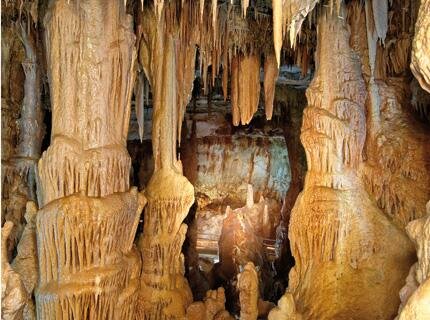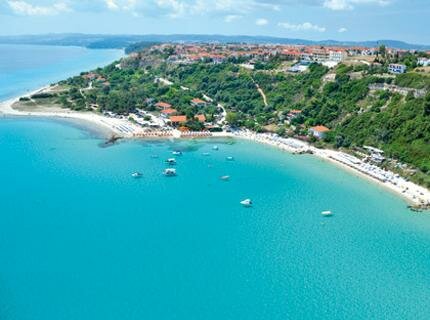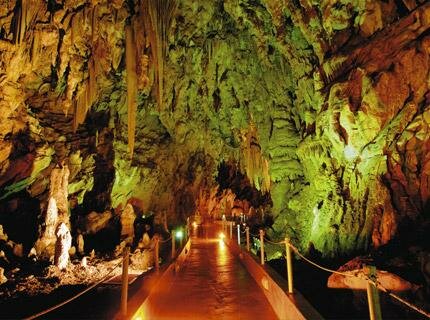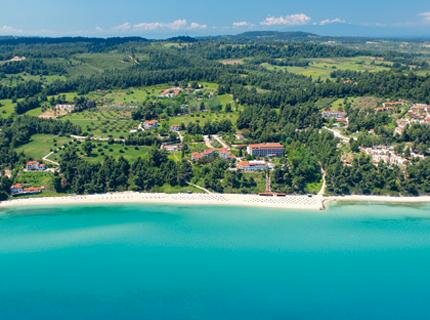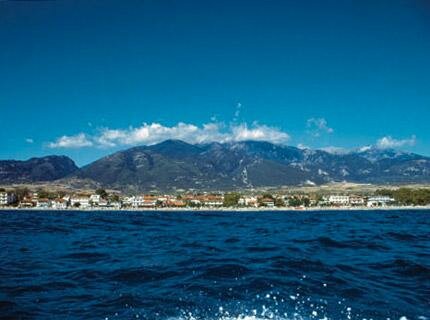⇠Thessaloniki 46km ⇠ Polygyros 39km
In Western Halkidiki, is the reknown Cave of Petralona. This cave became famous, not only because of the size or the wealth of its stalactites, stalagmites and its very intricate corridors and halls, but mainly because of the human and other fossils -dating from the Pleistocene Age- found here and the secrets of human life and prehistory that it veils. The cave of Petralona served as a home for the first humans about 700.000 years ago. It has a total surface of around 2.500 acres and its corridors are almost 1.500 m long. The “Main Hall” is 104 m long, 12 m wide and 8 m high. The stalactites and stalagmites make an impression with their wealth, shapes and colourings.
The Petralona Cave in Halkidiki is situated about 1km to the East of the homonymous village, on the western cliffs of the ancient Kalavros Mountain (700 m height). It is a famous cave with important human and hominid remains. Here were discovered the first human remains of Greece. The number and the historical value of the remains are extraordinary. The cave’s internal temperature remains steady (circa 17 (+1) Celsius) all year long. On the right and left sides of the tunnel you can see displayed cases including stone and bone tools, as well as bones, jaws and teeth of different kinds of animals. The main volume of the findings is exhibited in the Anthropological Museum which has been constructed right next to the cave. Signs of fire from burned bones have been traced in the “Mediterranean hall”. There are also ashes dating back to 700.000 B.C. representing the most ancient fire that humans had lit on Earth.
Near the village of Petralona, at the base of Mount Katsika, one can find the entrance of the Cave of Petralona. It was accidentally discovered in 1959 by a villager. They named it “Red stones” (Kokkines Petres) because of the red earth which coloured the stalagmites and stalactites. It covers an area of 10.000 m2. “The cave is part of an extensive cavern system in calcareous Mesozoic deposits containing large quantities of fossil mammalian bones including horse, cave bear, lion and others” encyclopedia Britannica says.
In 1960 Dr. Aris Poulianos found a complete skull and part of the skeleton of an erect hominid. It belonged to a woman between 25-35 years old. The skull is dated as being 700.000 years old and the traces of fire found next to it, around 1.000.000 years old. It is considered one of the earliest human findings in Europe.
The cave provides a breathtaking spectacle of geology beauty. In the part named “cemetery of Giants”, 14 different types of animal-bones were found. The “Great Hall” has huge stalagmites in white coral-like. The “Hall of Roots” has fine roots above the cave having pierced the roof and formed a net.
There is a Museum near the cave which contains many of the archaeological findings of the cave. The authentic skull is in the paleontological collection of the Aristotelian Museum of Thessaloniki, but there is a replica inside the cave, where it was found.
